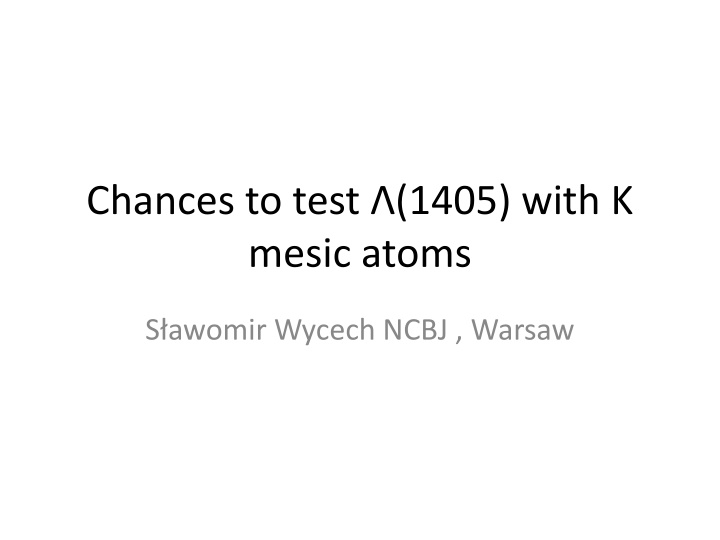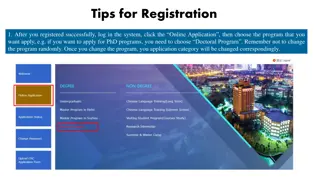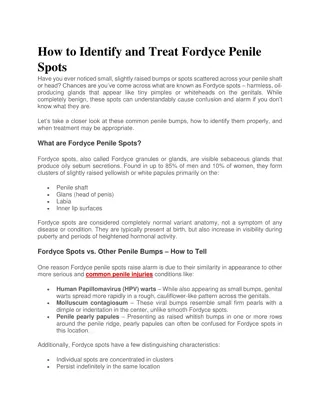
Exploring Sub-Threshold Region in Particle Physics
Dive into the world of particle physics with a focus on testing and analyzing atomic levels, limitations, and requirements below the threshold. Discover the interest in state 1405, the challenges in predicting its position and width, and methods for testing it effectively. Gain insights into the advantages and disadvantages of utilizing Kaonic atoms and the potential of antiprotonic atoms. Uncover the predictions and interactions in baryonic states to enhance your understanding of these complex scientific phenomena.
Uploaded on | 1 Views
Download Presentation

Please find below an Image/Link to download the presentation.
The content on the website is provided AS IS for your information and personal use only. It may not be sold, licensed, or shared on other websites without obtaining consent from the author. If you encounter any issues during the download, it is possible that the publisher has removed the file from their server.
You are allowed to download the files provided on this website for personal or commercial use, subject to the condition that they are used lawfully. All files are the property of their respective owners.
The content on the website is provided AS IS for your information and personal use only. It may not be sold, licensed, or shared on other websites without obtaining consent from the author.
E N D
Presentation Transcript
Chances to test (1405) with K mesic atoms S awomir Wycech NCBJ , Warsaw
KNOWN TRIVIALITIES AN ANALYSIS OF LIGHT P-bar ATOMIC LEVELS AN ATTEMPT TO LEARN (1405) FROM UPPER K ATOMIC LEVELS LIMITATIONS, REQUIREMENTS
The interest in (1405) : S01 state located below KN threshold Elementary : odd location in SU(3) QCD multiplet Chiral models : extension from pions to strange sector Nuclear Physics : quasibound states Astophysics : K condensates
No clear prediction for (1405) position and width From Maxim Mai review ,EPJ
A recent method to test (1405) below Kp threshold Jefferson Lab, Moryia ,2013
The real testing is below KN threshold Virtual K p yields Im F(Kp Kp) ~ | F(Kp )|2 Could we have F(Kp Kp) F(Kp Kp)I=0 directly below threshold ? YES, on protons bound at nuclear surfaces.
ADVANTAGE of KAONIC ATOMS Direct test of sub-threshold region in K p channel AMPLITUDE not |AMPLITUDE| ADDITIONAL ADVANTAGE of UPPER LEVELS Single colission ( Born term) is good enough Asymptotic nucleon wave functions Weak effects of the nucleus: Pauli bloking, collision broadening , KNN captures DISADVANTAGE Level shifts not always available, experiments are difficult Energy region is limited: -33 .. 0 MeV
FIRST AN EXAMPLE LIGHT ANTIPROTONIC ATOMS PURPOSE CHECKING BARYONIUM STATES PREDICTED BY N-Nbar INTERACTION MODELS An analogy to (1405)
Paris N- Nbar potential predicts baryonium in a P- wave Phys.Rev. C59,2313(1999) : Phys. Rev C79,054001(2009) TO BE CHECKED by levels in H ,2H, 3He , 4H atoms
GOING BELOW THRESHOLD Energy in the N Pbar Centre of Mass System E= M + M - BN- BP - ERECOIL ERECOIL = PPAIR2 / 2 MREDUCED
Energy regions involved- recoil spread about 5 MeV p N interactions with valence nucleons involve subthreshold amplitudes - 33 -15 -7 - 0 MeV 4He 3He 2H H Quasi free amplitudes in upper levels F ( - EB ERECOIL )
ANTIPROTONS - REPRODUCING 2P LEVEL WIDTHS by PARIS N-Nbar POTENTIAL THE TRUTH IS IN THE MIDDLE
REPRODUCING 2P LEVEL SHIFTS BY PARIS POTENTIAL Baryonium closer to Paris 99 , 4 He requires new physics
CONCLUSION QUASIBOUND STATE ( BARYONIUM ) IS LOCATED in BETWEEN the TWO PREDICTIONS E(33 P1 ) about -12 MeV MODEL TO CORRECT B.Loiseau, S.W. Phys Rev. C102(2020 )3,034006 QUESTION COULD ONE INVERT THE PROCEDURE EXTRACT (1405) PROFILE FROM KAONIC ATOMS
K - atomic level shifts due to S and P wave Kp ,Kn interactions Born approximation -i /2 = 2 / dr (r) [ a0(E) + 3a1(E) ] (r) nucleon wave functions atomic wave function Energy dependent amplitudes In upper levels - higher order terms ~5%
ANALYSIS OF UPPER WIDTHS IN K ATOMS THREE AMPLITUDES REQUIRED A0 (E) for (1405) to extract A1 A1P (E) describing (1385 ) assumed constant calculated
UNCERTAINTY A1 = A( Kn Kn ) unknown , it dominates statistically Vopt ~ ( A 0 + A 1)/ 2 p + A1 n M. Mai Review, EPJ Im A(Kn Kn) A1 =0.2 assumed here
OLD DATA LARGE ERRORS RESULTS COMPARABLE TO CLASS BUT INVOLVE ONLY I = 0 I = 1 Im a( Kn Kn ) REQUIRED ( FROM OTHER ATOMS) extracted A0(E) slope is stable , magnitude changes M. Mai , review , EPJ
LIMITATIONS CHECK THAT HIGHER ORDER IS SMALL simple FIND Im A 1 requires other experiment THE MAIN INTEREST IS Re A0 (E) REQUIRES UPPER LEVEL SHIFTS difficult Bragg method as with antyprotons
Isotopic differences to learn Im(Kn Kn) 3D widths in 7Li , versus 6 Li 10 B versus 11B 3D 2P observed by Wiegand, Batty ----------------------------------------- 2P widths useful for (1405) 4He versus 3He LEVEL SHIFTS VALUABLE in these states ! E ~ 5KeV , low intensity alas E~ 8 KeV






















